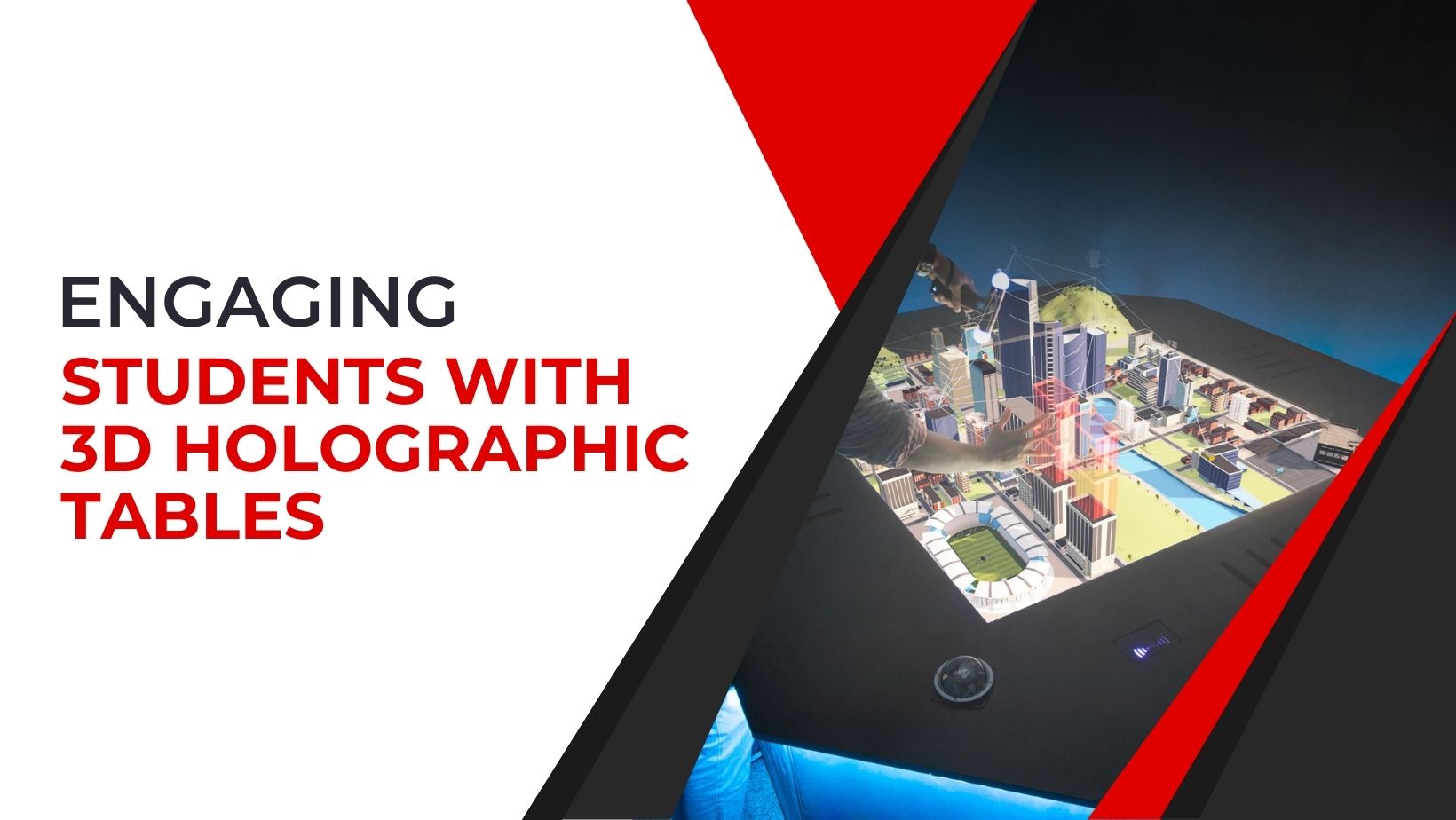In the recent rapidly emerging educational structure, traditional teaching methods are being augmented with innovative technologies. This process enhances student engagement and learning outcomes. One such groundbreaking innovation is the integration of 3D holographic tables in educational settings. These hologram tables offer an immersive learning experience that brings subjects to life, captivating students’ attention and nurturing deeper understanding. Let’s explore how this cutting-edge technology is revolutionizing education.


Explore the endless possibilities of holographic decoration and immerse students in interactive learning like never before.
The Rise of 3D Holographic Tables in Education
Over the past decade, 3D holographic tables have emerged as a powerful tool for educators. This tool creates dynamic and interactive learning environments. These tables utilize advanced hologram technology to project three-dimensional images and animations. This allows students to manipulate virtual objects with their hands. For commercial and entertainment purposes, the educational sector has quickly recognized these tables’ potential to enhance teaching and learning.
Enhancing Student Engagement Through Hologram Technology
One of the most significant advantages of 3D hologram tables is their ability to captivate students’ attention and spark curiosity. Traditional teaching methods often struggle to engage modern learners who are accustomed to interactive digital experiences. However, when presented with holographic content, students are naturally drawn into the lesson, and eager to explore and interact with the virtual environment. This heightened engagement promotes active participation and fosters a deeper connection with the subject matter.
Interactive Learning Experiences Via Hologram Decoration
3D holographic tables enable educators to design immersive and interactive learning experiences. This technology caters to diverse learning styles. Instead of textbooks or lectures, students can actively engage with virtual models, simulations, and experiments. For example, in a science class, students can dissect virtual organisms or explore the solar system in three dimensions. This hands-on approach not only reinforces theoretical concepts but also encourages critical thinking and problem-solving skills.
Promoting Collaboration and Communication for Holographic Tables
Collaborative learning is essential for developing teamwork and communication skills, which are highly valued in today’s society. 3D hologram decorations facilitate collaborative learning by allowing multiple students to interact with the same virtual content simultaneously. Whether working on group projects or solving interactive puzzles, students can collaborate effectively, sharing ideas and insights in real-time. Moreover, the immersive nature of holographic technology fosters the communication skills of students. This also articulates their thoughts and observations while navigating the virtual environment.
Personalized Learning Pathways Through Hologram Technology
Every student has unique learning preferences and abilities. 3D holographic tables offer the flexibility to customize learning experiences according to individual needs. Educators can tailor content to accommodate different learning paces, styles, and interests. It ensures that each student receives personalized instruction. Whether algorithms or interactive assessments, holographic technology empowers educators to cater to diverse student needs and maximize learning outcomes.
Real-World Applications and Career Readiness
One of the most compelling aspects of 3D hologram tables is their ability to bridge the gap between classroom learning and real-world applications. By simulating real-life scenarios and environments, students gain practical skills and insights that are directly applicable to future careers. For example, aspiring architects can design and visualize buildings in three dimensions. While medical students can practice surgical procedures on virtual patients. This hands-on experience not only enhances subject mastery but also prepares students for success in their chosen fields.
Overcoming Challenges and Limitations
While 3D holographic tables offer tremendous potential for educational innovation, they also present certain challenges and limitations. Implementation costs, technical complexities, and training requirements can pose obstacles for schools and educators. Moreover, ensuring equitable access to this technology remains a concern, particularly for underprivileged communities. Addressing these challenges will require collaborative efforts from stakeholders across the educational ecosystem. This also includes policymakers, technology developers, and educators.
The Future of Education
As technology continues to evolve, so too will its impact on education. 3D hologram decorations represent just one example of how emerging technologies are reshaping the learning experience. Looking ahead, we can expect further advancements in augmented reality, virtual reality, artificial intelligence, and other cutting-edge technologies. These revolutionize education in ways we can scarcely imagine. By embracing innovation and adapting to change, educators can prepare students for success in a quickly changing world.
Conclusion
So, 3D hologram tables hold immense promise for transforming education and engaging students in meaningful learning experiences. By harnessing the power of holographic technology, educators can create immersive, interactive, and personalized learning environments. This also inspires curiosity, fosters collaboration, and prepares students for future success. While challenges remain, the potential benefits of integrating holographic tables into classrooms are undeniable. As we embrace the future of education, let us seize the opportunity to unlock new possibilities for teaching and learning. To know more about holographic displays, connect with the Vision3D customer service number – +91-8971953451.
